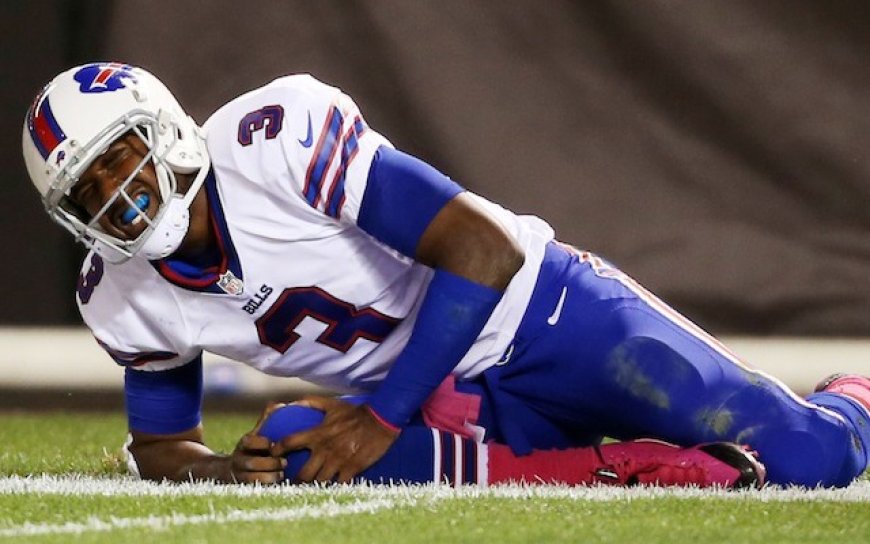NFL Knee Injuries and the Future of Recovery: How Tech Is Changing the Game for Athletes
Steelers safety DeShon Harmon’s knee injury highlights how new rehab technologies — from robotics to regenerative medicine — are reshaping recovery timelines in the NFL.

Pittsburgh Steelers safety DeShon Harmon’s recent knee injury has once again put the spotlight on one of the NFL’s most persistent challenges: lower-body injuries that can derail careers. While knee injuries — from ACL tears to meniscus damage — have long been viewed as season-ending, today’s advances in sports medicine and rehabilitation technology are rewriting the timeline for recovery.
For athletes like Harmon, the combination of biomechanics, regenerative therapies, and AI-powered rehab devices offers not just a chance to return to play, but potentially to come back stronger than before.
The Scope of NFL Knee Injuries
Knee injuries are among the most common in the NFL. According to league medical reports, nearly 20% of all injuries involve the knee, with ACL and MCL tears accounting for the majority. Historically, recovery from an ACL tear could take 9 to 12 months, often leaving doubts about whether a player would regain their pre-injury explosiveness.
But today, the conversation is shifting. With technology pushing the boundaries of what rehab can achieve, athletes are now benefitting from recovery timelines that are shorter, more precise, and safer.
The Tech Behind Faster Recovery
1. Robotic-Assisted Rehabilitation
At leading facilities, robotic exoskeletons and motion-tracking devices are being used to guide players through precise rehab movements. Unlike traditional physical therapy, these machines ensure that pressure is distributed evenly, reducing the chance of re-injury.
“Consistency is key in the early stages of recovery,” said Dr. Marcus Ellison, a sports medicine specialist who has worked with NFL players. “Robotic-assisted rehab allows us to make micro-adjustments to a player’s movement that a human therapist might miss.”
2. Regenerative Medicine
Platelet-rich plasma (PRP) injections and stem cell therapies are now commonly used to accelerate tissue healing. PRP, in particular, has gained traction in the NFL because it helps reduce inflammation and stimulates faster regeneration of ligament fibers.
3. AI-Driven Motion Analytics
Advanced sensors and wearables are transforming how doctors monitor recovery. By analyzing every step an athlete takes during rehab, AI systems provide real-time feedback, flagging potential risks before they become setbacks. These technologies are being deployed at specialized facilities, such as those highlighted by the American Academy of Orthopaedic Surgeons, which frequently publishes research on sports injury rehabilitation.
4. Cryotherapy and Blood Flow Restriction Training
Cold chambers and controlled circulation training are becoming standard parts of post-surgery regimens. Cryotherapy reduces inflammation, while blood flow restriction (BFR) training helps athletes rebuild muscle strength without putting excess strain on healing ligaments.
What It Means for Timelines
In the past, an ACL tear was a “lost year.” Today, recovery can be compressed to six to eight months, depending on the severity of the injury and the player’s conditioning. Steelers insiders suggest Harmon could be on track for a quicker return thanks to the integration of advanced rehab technology in his treatment plan.
This isn’t about rushing players back onto the field prematurely. Instead, it’s about personalized recovery programs that adapt to an athlete’s biology, not a one-size-fits-all model.
Lessons for Athletes Beyond the NFL
While these technologies are most visible at the professional level, they are slowly making their way into college athletics and even youth programs. From exoskeleton-supported training to AI-enabled injury monitoring, the benefits are clear: safer recoveries and lower reinjury rates.
The NFL’s official health and safety program has already begun endorsing broader use of these innovations, signaling that what starts at the elite level will soon become the standard across competitive sports.
For recreational athletes and weekend players, the same principles apply. Early diagnosis, access to proper rehab tools, and adherence to scientifically validated recovery programs can make the difference between a return to form and long-term damage.
A Turning Point in Sports Medicine
DeShon Harmon’s injury highlights the fragility of even the most finely tuned athletes. But it also illustrates how far recovery has come. No longer does a knee injury mean a career-defining setback. With tech-driven rehab, players are not only coming back but in some cases, improving their performance post-injury.
“Every generation of athletes benefits from the breakthroughs of the last,” said Dr. Ellison. “This is one of those moments in sports medicine where the tools are catching up with the needs of the game.”
As the NFL prepares for another season filled with high-speed collisions and physical strain, fans, coaches, and players alike will be watching how quickly and effectively athletes like Harmon make their return. If current trends continue, the future of sports may not just be about avoiding injuries — but mastering recovery.











